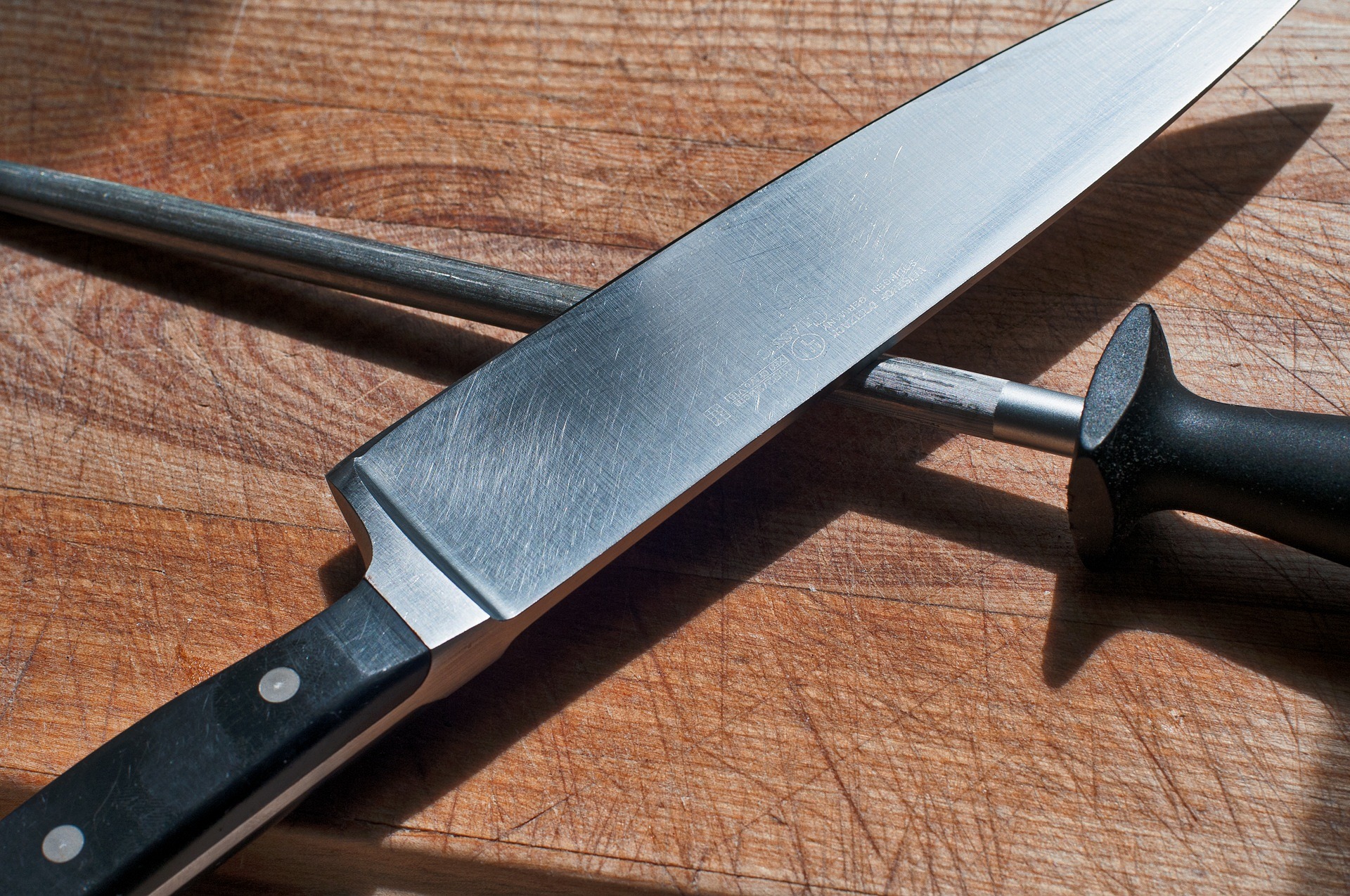Are you curious about the most commonly used knives by chefs? They make it look so easy, right? But, look no further! Chef’s knives are a staple in every professional kitchen, known for their versatility and efficiency. With their broad, sharp blades and pointed tips, chef’s knives are perfect for chopping, slicing, dicing, mincing, deboning, and handling general kitchen tasks.
They are excellent for precision cutting of vegetables, herbs, fruits, meats, poultry, and fish, ensuring thin and uniform slices every time. While Japanese-style chef’s knives have gained popularity for their precision and sharpness, it is important to note that they require special care and maintenance due to their thinner, harder blades. So, what knives do most chefs use? Let’s find out!
 Chopping Knives
Chopping Knives
Characteristics
Chopping knives, also known as chef’s knives, are characterized by their broad, sharp blades and pointed tips. They typically have a length ranging from 6 to 12 inches, with an average size of 8 inches. The shape of the blade allows for a rocking motion while cutting, making it versatile and efficient in the kitchen. They are typically made from high-quality stainless steel or carbon steel, ensuring durability and sharpness.
Common Types
There are various types of chopping knives available on the market. The most common type is the classic chef’s knife, which has a straight blade and a slight curve towards the tip. This design allows for precision and control while chopping vegetables, herbs, and fruits.
Another type is the Santoku knife, which originated in Japan. Santoku knives have a shorter and wider blade compared to the classic chef’s knife. They are great for chopping, slicing, and dicing vegetables, making them a popular choice among chefs.
Maintenance
To maintain the sharpness and longevity of your chopping knife, regular maintenance is essential. Here are a few tips to keep in mind:
- Hand Wash: Always hand wash your chopping knife with warm water and mild dish soap. Avoid putting it in the dishwasher, as the high heat and harsh detergents can damage the blade.
- Dry Properly: After washing, make sure to thoroughly dry the knife with a clean towel. This prevents any moisture from causing rust or corrosion.
- Sharpen Regularly: Chopping knives requires regular sharpening to maintain their sharpness. You can use a sharpening stone or a knife sharpener to keep the blade in top condition.
- Store Safely: Store your chopping knife in a knife block or a knife sheath to protect the blade from any potential damage. Avoid storing it loosely in a drawer where it can get banged around and dull the edge.
By following these maintenance tips, you can ensure that your chopping knife remains sharp and performs optimally in the kitchen.
Slicing Knives
Characteristics
Slicing knives are specifically designed for slicing meats, poultry, and fish. They have long, thin blades with a sharp edge, allowing for precise and uniform cuts. The blade length of slicing knives typically ranges from 8 to 14 inches, making them suitable for various sizes of meat and fish. The narrow width of the blade reduces friction, resulting in clean and smooth slices.
Common Types
The most common type of slicing knife is the carving knife, which is often used for slicing roasts, ham, and other large cuts of meat. Carving knives have a long, thin blade that allows for effortless slicing through cooked meats, producing thin slices that are perfect for serving.
Another type of slicing knife is the fillet knife, which has a flexible blade that is designed for fish and seafood. The flexibility of the blade enables it to glide along the contours of the fish, making it easier to remove bones and achieve precise fillets.
Maintenance
To maintain the performance and longevity of your slicing knife, here are a few maintenance tips:
- Hand Wash: Like any other knife, slicing knives should be hand washed with warm water and mild dish soap. Avoid using abrasive sponges or cleaners that can damage the blade.
- Dry Properly: After washing, make sure to thoroughly dry the knife to prevent any moisture from causing rust or corrosion.
- Sharpen Regularly: Slicing knives require regular sharpening to maintain their sharp edge. You can use a sharpening stone or a knife sharpener to restore the blade’s sharpness.
- Store Safely: Store your slicing knife in a knife block or a knife sheath to protect the blade from any potential damage. Avoid storing it loosely in a drawer, as it can dull the edge and increase the risk of accidents.
By following these maintenance tips, you can keep your slicing knife in optimal condition and ensure that it performs flawlessly whenever you need precise and clean slices
Dicing Knives
Characteristics
Dicing knives are designed specifically for dicing ingredients, making them a crucial tool in the kitchen for preparing dishes like stir-fries and salads. They have a medium-length blade with a sharp edge, allowing for precise and efficient dicing.
Common Types
There are various types of dicing knives available, but the most common is the utility knife. Utility knives have a straight blade with a sharp tip, making them versatile for various kitchen tasks, including dicing vegetables and fruits.
Another type of dicing knife is the cleaver. Cleavers have a wide and thick blade that allows for powerful chopping and dicing of larger ingredients, such as meat and bones. They are commonly used in Chinese cuisine.
Maintenance
To maintain the performance and longevity of your dicing knife, here are a few maintenance tips:
- Hand Wash: Always hand wash your dicing knife with warm water and mild dish soap. Avoid using harsh detergents or abrasive sponges that can damage the blade.
- Dry Properly: After washing, make sure to thoroughly dry the knife with a clean towel to prevent any moisture from causing rust or corrosion.
- Sharpen Regularly: Dicing knives require regular sharpening to maintain their sharpness. You can use a sharpening stone or a knife sharpener to restore the blade’s edge.
- Store Safely: Store your dicing knife in a knife block or a knife sheath to protect the blade from damage. Avoid storing it loosely in a drawer, as it can dull the edge and increase the risk of accidents.
By following these maintenance tips, you can ensure that your dicing knife remains sharp and performs optimally for all your dicing needs in the kitchen.


